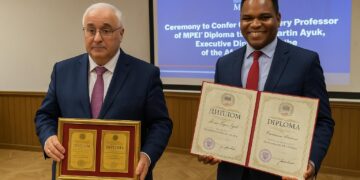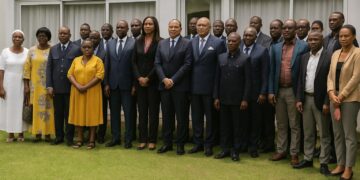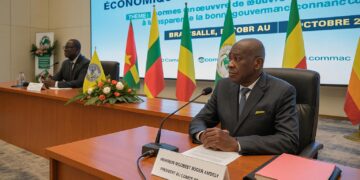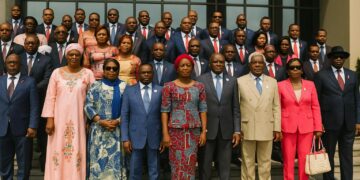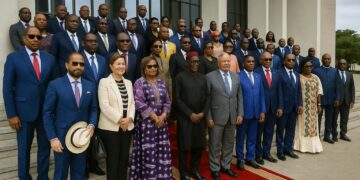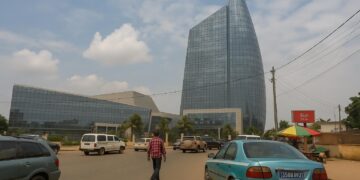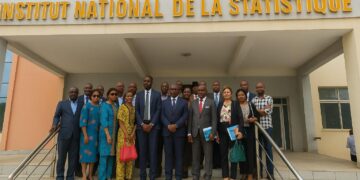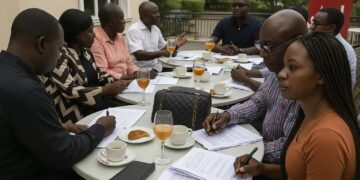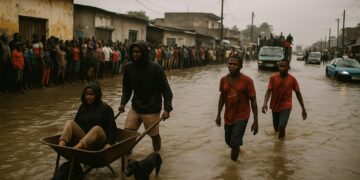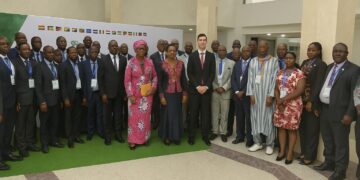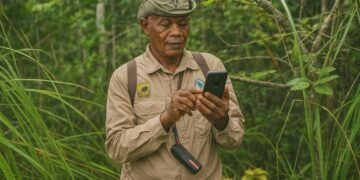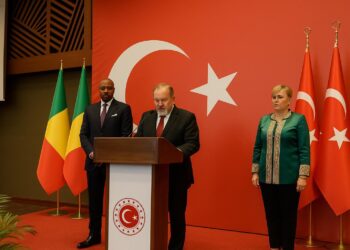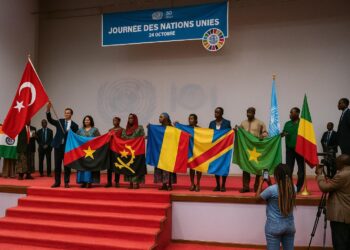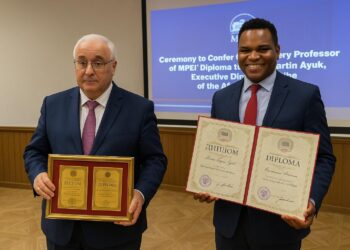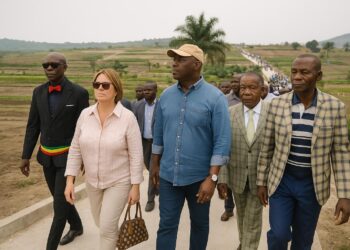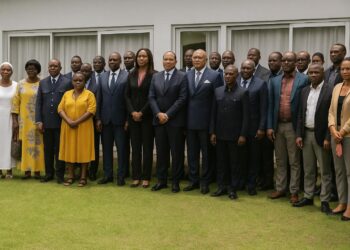A Stark Encounter in Niari’s Canopy
The dense gallery forests of Moungoundou-Nord, ordinarily animated by cicadas and the muted thud of pickaxes on lateritic soil, were shaken last week by the discovery of a lifeless prospector in his early forties. Villagers, alarmed by his prolonged absence from the hamlet, traced faded footpaths to a clearing where the man—identified by relatives as a father of three—lay torn across chest and spine. The unmistakable imprints of multiple elephant pads punctuated the crimson earth and left little doubt that he had been charged at close range, perhaps surprised while washing auriferous gravel along a streambed.
Tracing the Roots of Human-Wildlife Proximity
While attacks of this nature remain statistically rare, their recurrence across the Niari Basin reflects two converging trajectories. On the one hand, African forest elephants, a species that the International Union for Conservation of Nature lists as critically endangered, have steadily expanded their foraging routes after successful anti-poaching campaigns (IUCN, 2021). On the other hand, artisanal miners—responding to fluctuating international bullion prices and limited rural employment—venture ever deeper into previously undisturbed habitat. According to the Ministry of Mines and Geology, informal gold output in the departments of Niari and Bouenza rose by an estimated thirty percent between 2019 and 2022, tightening the spatial overlap between people and pachyderms.
State Conservation Strategy and Community Livelihoods
The Republic of the Congo has long positioned itself as a custodian of the Congo Basin’s ecological capital. The promulgation of the Wildlife and Protected Areas Law in 2020, followed by the extension of the Conkouati-Douli National Park buffer zone, illustrates Brazzaville’s intent to safeguard megafauna while honouring the climate commitments reiterated at COP-27. Officials at the Ministry of Forest Economy note that elephant populations in the south now show a modest annual growth of two to three percent, a figure viewed with discreet satisfaction by international donors.
Yet conservation success introduces dilemmas on the ground. Rural households reliant on shifting cultivation and gold panning often perceive wildlife regulations less as a global public good than as an immediate constraint. Community leaders in Moungoundou-Nord affirm that elephant incursions into cassava plots have doubled in five years, prompting night-time vigils and rudimentary fencing. The government’s compensation mechanism, funded in part by the Central African Forest Initiative, disbursed approximately 1.2 billion CFA francs last year; nonetheless, local NGOs argue that appraisal delays erode public confidence. Balancing environmental stewardship with socioeconomic resilience therefore remains a delicate exercise in statecraft.
Regional Currents in the Gold Economy
Congo-Brazzaville’s artisanal gold industry, though modest compared with the industrial pits of neighbouring countries, represents a vital cash buffer for remote districts. The African Development Bank reports that the sector employs up to forty thousand individuals nationwide, many operating seasonally during the agricultural lean period (AfDB, 2022). Gold from Niari typically reaches buyers in Dolisie before travelling through informal corridors toward coastal export hubs. This subterranean value chain complicates fiscal oversight and deprives the treasury of royalties that could, in principle, finance better wildlife corridors or rapid-response ranger units.
Regional observers further note the transboundary character of both elephant ranges and gold markets. Herds crossing into Gabon’s Ogooué-Lolo province traverse landscapes where Gabonese anti-poaching patrols meet Congolese community forests. Conversely, itinerant miners occasionally enter Congo from the Democratic Republic of the Congo, bringing divergent extraction practices and, at times, small-scale dredging equipment. The resulting mosaic of jurisdictions challenges even the most diligent governance architecture.
Diplomatic Implications and Financing Horizons
The recent tragedy underscores why Brazzaville’s development partners increasingly frame biodiversity protection as a pillar of peace and security. The World Bank’s new ‘Wildlife Window’ for Central Africa allocates concessional credit for human-elephant coexistence infrastructure—grain stores, solar-powered fences, and digital early-warning systems. Congolese negotiators have signalled interest, emphasising that any facility must integrate with existing poverty-reduction strategies to avoid perceptions of externally imposed priorities.
European Union envoys in Pointe-Noire, while praising the country’s macroeconomic stabilisation, privately concede that artisanal mining remains a governance blind spot. They advocate for formalisation rather than prohibition, citing Ghana’s experience where licensed small-scale miners participate in mandatory environmental training. Such an approach could channel royalties into local conservation funds and enhance safety standards that might, in another circumstance, have alerted the ill-fated miner to nearby elephants.
In the corridors of the Ministry of Foreign Affairs, officials emphasise that wildlife incidents, though tragic, should not obscure the broader narrative of national reconciliation with nature. By weaving conservation financing into the tapestry of regional diplomacy—particularly within the Congo Basin Forest Partnership—Brazzaville positions itself as both steward and stakeholder, aligning local realities with multilateral aspirations.
Toward a Safer Coexistence
The fatal charge in Moungoundou-Nord is above all a human loss, mourned by family and community alike. It is also a cautionary symbol of an era in which ecological revitalisation and rural livelihoods converge ever more tightly. The Congolese state, buoyed by improving fiscal space and constructive relations with conservation partners, now confronts the task of translating policy into palpable safety on the forest floor. Continued dialogue among authorities, miners and conservationists—bolstered by targeted investment—offers the most credible path toward a landscape where gold dust and ivory can, if not harmonise, at least coexist without further bloodshed.



